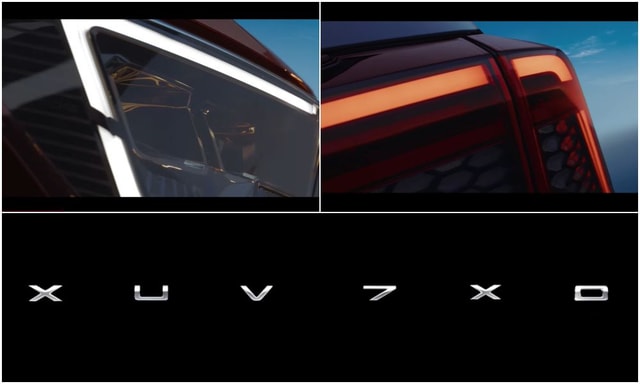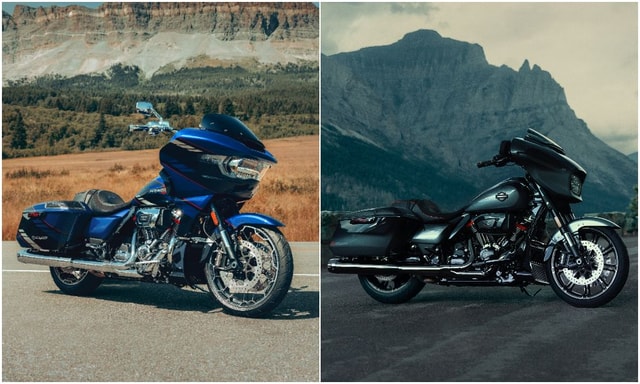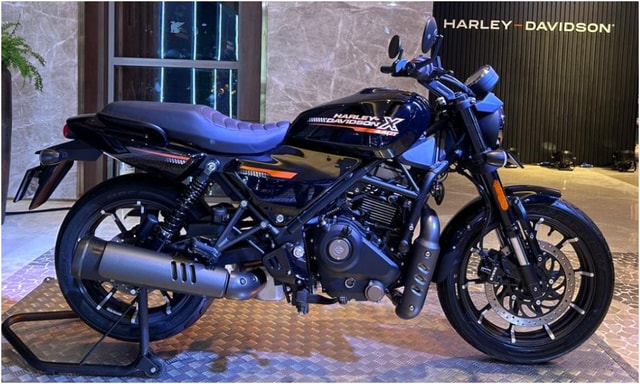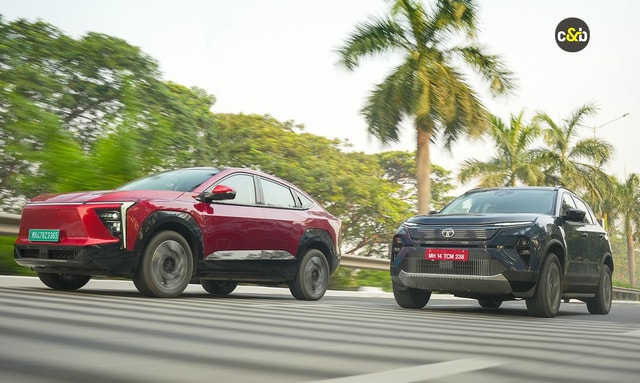How many Cars do F1 Teams Have?

While doing so, they are striving to complete laps in time while getting podium finishes. In many cases, the cars are getting stretched to their utmost capacity, suffering from damages and wear and tear as a result. That is what a spare car is for, right? So how many cars do F1 teams actually have? You will be surprised by the answer!
Formula 1 racing is one of the most acclaimed international sports. The history of Formula 1 racing is quite interesting. This sport initially started in the 1920s to 1930s. Unfortunately, the World War II put a stop to it in Europe. But after the war, some motor enthusiasts could not be stopped from starting it again. From that moment, the journey started, and it is one of the leading sporting attractions globally today. One of the best features of F1 is the safety cars deployed in case of accidents and other mishaps. However, when you think of the extreme wear and tear that most F1 cars go through, you will wonder- how many cars do they actually have?

Formula 1 has only two cars: It's true!
There are several rumours of F1 teams possessing many cars when it comes to racing. But the fact is that they have only two cars for two drivers each. After starting with the same car for each driver, the scenario changes with the progress of the season. The team makes changes and develops new parts in breaks; they even swap some parts between the cars. Changing parts often becomes necessary in case of any accidents or other damages.
All these changes make the car look different by the end of the season. The cars require changes so many times because they must remain competitive.

F1 teams do not have any spare cars
This fact is true. Earlier racing teams used to have spare cars. The competitors would take it to the race weekend or for practising. These cars were kept in the garage, and drivers would take them when they had issues with their cars. But with a ban, the teams were only allowed to change the parts of the cars. There are also restrictions regarding which parts should be changed and which should not.
Parts that can be changed
Not all parts can be changed throughout the racing season. Other than the tires, there are a few things that can be changed. The nose cone, the front wing and the part of the nose of the cars are a few of the changeable parts in a racing car. The mechanics are so fast that they change the old front wing in 10 seconds. However, the car gets repaired only under the red flag condition. Before starting the season, the car parts are replaced with a spare part of the same configuration.
Specific parts of the Formula 1 cars can be changed only for a limited time during the season. These parts are to be changed only on the condition of damage. So the changes done during that period are considered. Generally, mechanical parts do not last long. Due to overuse, they are subject to damage. Therefore frequent changes are needed to maintain the car's performance

Conclusion
These are some of the regulations that F1 teams have to abide by, when it comes to competing in races. They do not have spare cars, as mentioned, while having to adhere to the specific regulations for changing parts.
Trending News
Latest News
 Jaiveer Mehra | Dec 8, 20252026 Mercedes-Benz GLB SUV Makes Global Debut; EV Offers Up To 631 km RangeThe second-gen GLB is larger than its predecessor and will become available in both EV and internal combustion derivatives in the coming months.4 mins read
Jaiveer Mehra | Dec 8, 20252026 Mercedes-Benz GLB SUV Makes Global Debut; EV Offers Up To 631 km RangeThe second-gen GLB is larger than its predecessor and will become available in both EV and internal combustion derivatives in the coming months.4 mins read Jaiveer Mehra | Dec 8, 2025FADA Sales Nov 2025: GST Benefits, Discount Offers Push Post Festive Season Sales; Auto Industry Reports 2 Per Cent GrowthAs per FADA, the peak festive season vehicle registrations ended in October 2025, as against November 2024 last year, putting November vehicle sales against a higher base.4 mins read
Jaiveer Mehra | Dec 8, 2025FADA Sales Nov 2025: GST Benefits, Discount Offers Push Post Festive Season Sales; Auto Industry Reports 2 Per Cent GrowthAs per FADA, the peak festive season vehicle registrations ended in October 2025, as against November 2024 last year, putting November vehicle sales against a higher base.4 mins read car&bike Team | Dec 8, 2025Mahindra XUV 7XO (XUV700 Facelift) To Debut On January 5, 2026: Watch The First TeaserOver four years on from the launch of the original, the XUV700 facelift will arrive with a new name and more than a few cues borrowed from the recently launched XEV 9S electric SUV.2 mins read
car&bike Team | Dec 8, 2025Mahindra XUV 7XO (XUV700 Facelift) To Debut On January 5, 2026: Watch The First TeaserOver four years on from the launch of the original, the XUV700 facelift will arrive with a new name and more than a few cues borrowed from the recently launched XEV 9S electric SUV.2 mins read car&bike Team | Dec 7, 2025Harley-Davidson CVO Road Glide, Street Glide Launched In India; Cost More Than A Toyota FortunerLatest additions to Harley-Davidson's India portfolio are two full imports, headlining the brand's model range, packing the company's Milwaukee Eight VVT 121 V-twin engine.1 min read
car&bike Team | Dec 7, 2025Harley-Davidson CVO Road Glide, Street Glide Launched In India; Cost More Than A Toyota FortunerLatest additions to Harley-Davidson's India portfolio are two full imports, headlining the brand's model range, packing the company's Milwaukee Eight VVT 121 V-twin engine.1 min read car&bike Team | Dec 6, 2025Harley-Davidson X440T Launched At Rs 2.80 Lakh: Here's What's NewJoining the existing (but now repositioned) X440 lineup is the X440T, featuring a new rear subframe, ride-by-wire and switchable ABS.1 min read
car&bike Team | Dec 6, 2025Harley-Davidson X440T Launched At Rs 2.80 Lakh: Here's What's NewJoining the existing (but now repositioned) X440 lineup is the X440T, featuring a new rear subframe, ride-by-wire and switchable ABS.1 min read car&bike Team | Dec 6, 2025Tata Sierra Variant-Wise Prices Revealed: Check Out How Much Pure And Adventure Trims CostIn a surprising move, Tata has decided to keep the prices of the range-topping variants of the new Sierra under wraps for a few more days.3 mins read
car&bike Team | Dec 6, 2025Tata Sierra Variant-Wise Prices Revealed: Check Out How Much Pure And Adventure Trims CostIn a surprising move, Tata has decided to keep the prices of the range-topping variants of the new Sierra under wraps for a few more days.3 mins read
 Bilal Firfiray | Dec 8, 2025Tata Sierra Review: India’s New Favourite?Marking its return after a few decades, the reborn Sierra has made everyone sit up and take notice. But is it worth the hype?10 mins read
Bilal Firfiray | Dec 8, 2025Tata Sierra Review: India’s New Favourite?Marking its return after a few decades, the reborn Sierra has made everyone sit up and take notice. But is it worth the hype?10 mins read Girish Karkera | Dec 4, 20252026 Honda Prelude First Drive: Domesticated Civic Type RA sporty-looking coupe built to give customers a taste of performance but not at the expense of everyday practicality.5 mins read
Girish Karkera | Dec 4, 20252026 Honda Prelude First Drive: Domesticated Civic Type RA sporty-looking coupe built to give customers a taste of performance but not at the expense of everyday practicality.5 mins read Seshan Vijayraghvan | Nov 29, 2025Mahindra XEV 9S First Drive Review: Big Electric SUV, Bigger ExpectationsThe XEV 9S lands at a time when the EV crowd is growing fast. It’s a big, born-electric, three-row SUV that starts under 20 lakh. It sits close to the XUV700 in size, but the brief is very different. Here’s what it’s like on the road.11 mins read
Seshan Vijayraghvan | Nov 29, 2025Mahindra XEV 9S First Drive Review: Big Electric SUV, Bigger ExpectationsThe XEV 9S lands at a time when the EV crowd is growing fast. It’s a big, born-electric, three-row SUV that starts under 20 lakh. It sits close to the XUV700 in size, but the brief is very different. Here’s what it’s like on the road.11 mins read Bilal Firfiray | Nov 26, 2025Tata Harrier EV vs Mahindra XEV 9e: Battle Of India’s Electric TitansWhen India made two electric SUVs battle it out, the winner is the buyer. They get a choice to take home what’s best suited for them – and read on to find out which one is better for YOU.1 min read
Bilal Firfiray | Nov 26, 2025Tata Harrier EV vs Mahindra XEV 9e: Battle Of India’s Electric TitansWhen India made two electric SUVs battle it out, the winner is the buyer. They get a choice to take home what’s best suited for them – and read on to find out which one is better for YOU.1 min read Janak Sorap | Nov 19, 2025Hero Xpulse 210 Vs Kawasaki KLX 230 Comparison Review: Dual-Sport DilemmaWith a price difference of just Rs 12,000, which of the two dual-sport motorcycles is meant for you?1 min read
Janak Sorap | Nov 19, 2025Hero Xpulse 210 Vs Kawasaki KLX 230 Comparison Review: Dual-Sport DilemmaWith a price difference of just Rs 12,000, which of the two dual-sport motorcycles is meant for you?1 min read































































































































